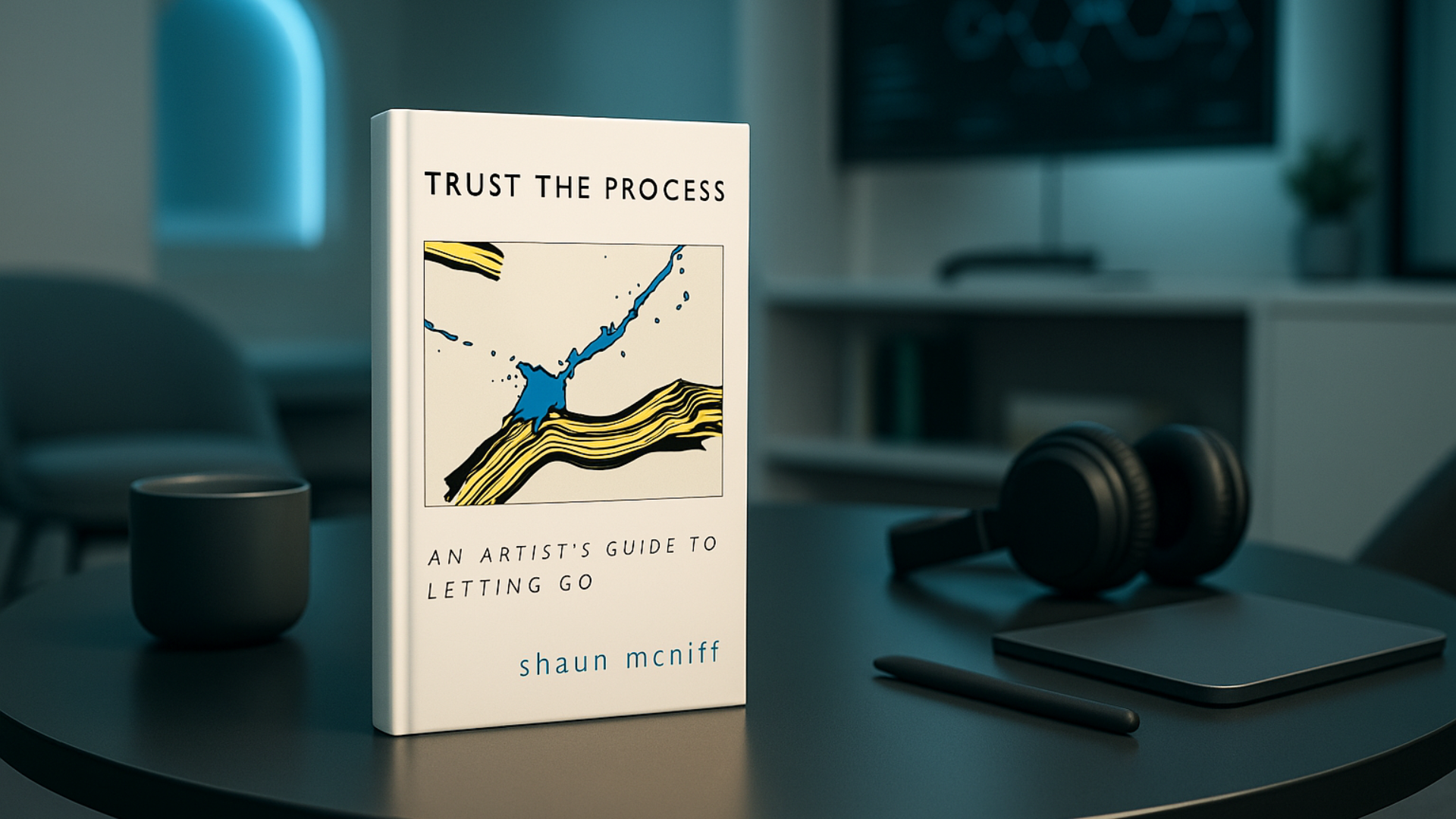Embrace Uncertainty in Creativity with Trust the Process

Book Review: Trust the Process by Shaun McNiff
A lyrical invitation to honour uncertainty, follow intuition, and live creatively through presence
In Trust the Process, Shaun McNiff offers a gentle and wise meditation on creativity as a living, unfolding practice. Drawing on decades of experience in expressive arts therapy, he invites the reader to embrace the unknown, to create without expectation, and to allow the act of making to reveal its own direction. This is not a guide for mastering a craft. It is a book about learning to listen.
McNiff encourages a relationship with creativity that is intuitive and embodied. His work speaks to artists, therapists, educators, and seekers who are more interested in process than product. Through rich reflections and stories, he builds a case for trust as the foundation of creative life.
What the book promises
Trust the Process promises to free readers from the pressure of knowing where their creative work is going. McNiff writes with the belief that art emerges when we let go of control. He assures the reader that the act of creating itself carries intelligence. If we allow it to lead, something meaningful will come through.
The book offers insight rather than instruction. It promises to shift the reader’s mindset from performance and perfection to exploration and response. This shift, McNiff believes, opens space for more authentic expression and deeper healing.
What the book delivers
The book delivers its promise through a series of meditative chapters that reflect on various aspects of creative process. McNiff draws from his own experience as a painter, educator, and art therapist. He also brings in insights from mythology, spirituality, and psychology. Together, these threads form a rich tapestry of thought.
Rather than outline a method, McNiff encourages the reader to observe what arises in the act of making. He explores how repetition, movement, rhythm, and even frustration are all part of the creative cycle. He writes about returning to the same image again and again, not to fix it, but to understand it more deeply.
There are chapters on the power of materials, on working through chaos, and on the wisdom of the body. McNiff speaks of the studio as a space of sacred witnessing. He reminds us that even when nothing appears to be happening, something is always taking shape.
Style and structure
McNiff writes in a reflective and poetic style. His tone is gentle and spacious, encouraging the reader to slow down and pay attention. The language is rooted in lived experience, with a rhythm that mirrors the creative flow he describes. There is no push toward productivity. Instead, there is an invitation to breathe, to notice, and to return to the work with fresh eyes.
The structure of the book is thematic rather than linear. Each chapter explores a single idea or reflection, and while there is a natural flow, readers can move through the book non-sequentially. The content is rich but never dense. It feels like sitting beside a thoughtful teacher who trusts you to take what you need.
There are no step-by-step exercises or bolded takeaways. What the book offers instead is space, and the kind of language that prompts inner reflection. For many readers, this will be a welcome contrast to more directive creativity books.
Where the book shines
This book shines in its ability to reframe uncertainty as an essential part of creative work. McNiff’s reflections on trust are some of the most insightful and comforting in the creative nonfiction space. He reminds us that not knowing is not a failure. It is part of the invitation.
His understanding of movement and material as sources of knowledge is also deeply valuable. McNiff does not separate mind from body or emotion from expression. He speaks to the wholeness of the creative experience. For artists and facilitators who work somatically, this integration will feel especially relevant.
The tone of respect he brings to both the work and the reader is another strength. He does not push or persuade. He simply offers what he has seen and lived, with quiet authority and care.
Light limitations
Because the book leans heavily into reflection, readers who are looking for structured guidance may feel adrift. There are few concrete instructions. Instead, the reader is asked to listen to their own process and find their own way forward.
At times, the writing repeats ideas in different language. While this supports the meditative tone, it may feel circular to those expecting new insights with each chapter. Some readers may prefer a more condensed version of the core messages.
The references to expressive arts therapy are not deeply technical, but they do assume a basic comfort with creative and psychological concepts. Readers entirely new to this way of thinking may need to slow their pace or revisit chapters more than once.
Final thoughts
Trust the Process is not a workbook or a guide to productivity. It is a reflection on what it means to live and create with openness, presence, and courage. Shaun McNiff writes with the wisdom of someone who has spent years in conversation with art and the people who make it. He offers a way of being with creativity that is rooted in trust, not technique.
This book is ideal for those who are tired of pushing and ready to listen. It does not promise control. It promises relationship. It encourages the reader to show up, to stay curious, and to honour the intelligence of the process itself.
Highly recommended for artists, expressive arts therapists, educators, and seekers who want to deepen their creative practice through attention and intuition.